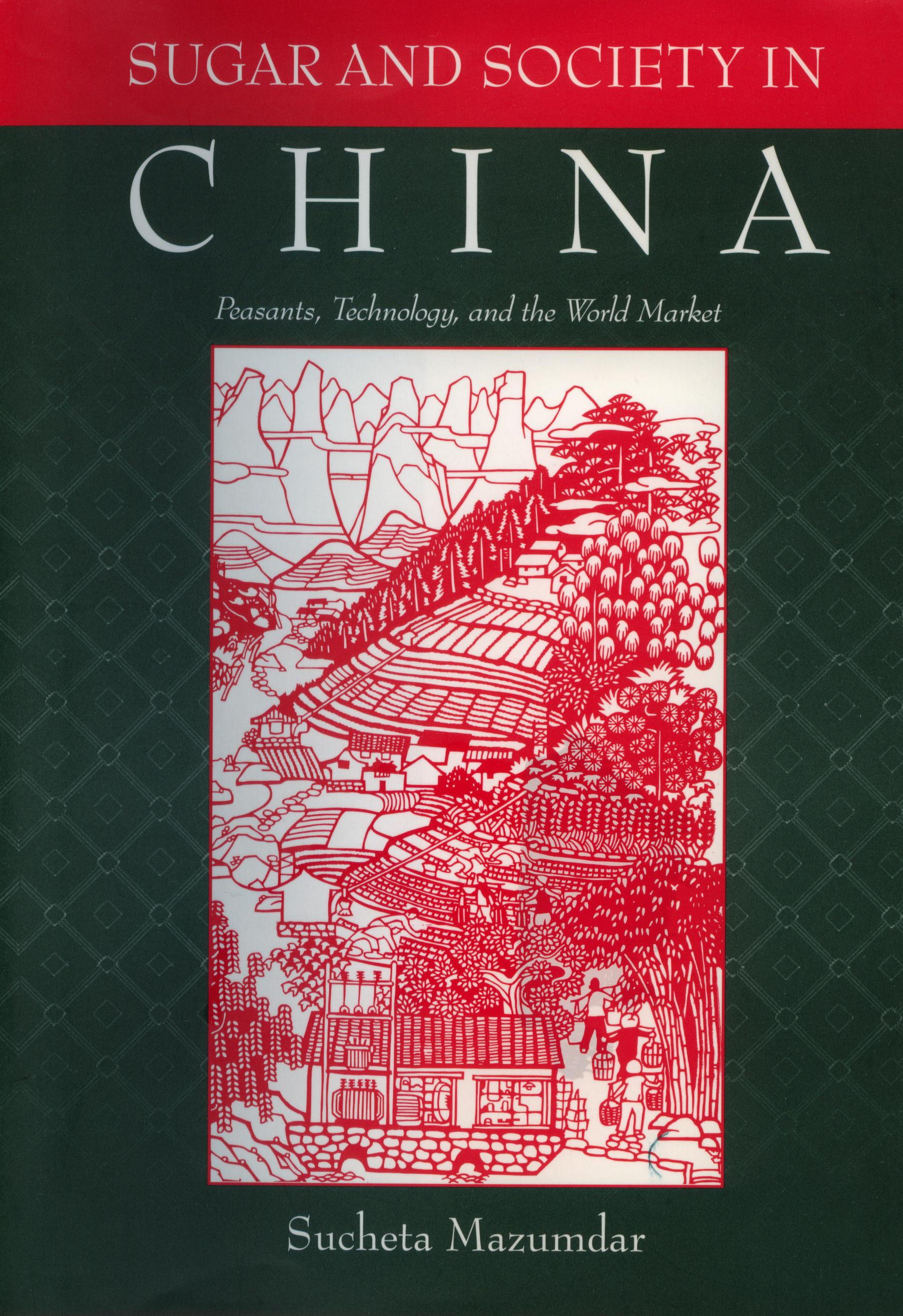 World Sugar History Newsletter
World Sugar History Newsletter
Number 28, June 1999
In this issue:
This version of the World Sugar History Newsletter, Number 28, June 1999, has been edited for the purpose of on-line display. The contents remain complete.
BOOK REVIEW

Sucheta Mazumdar, Sugar and Society in China. Peasants, Technology, and the World Market (Cambridge, Massachusetts, and London: Harvard University Asia Center, distributed by Harvard University Press, 1998). Pp. xx + 657. Tables, figures, maps, appendix, bibliography, glossary, index. $49.50 (cloth). ISBN 0-674-85408-X.
This impressive work enormously increases our understanding of the history and geography of the sugar industry in China. Sucheta Mazumdar traces the development of the industry from its origins to the end of the nineteenth century, but her focus is on the three centuries of the Qing dynasty (1644-1911). Her interests extend beyond the sugar industry: indeed, she uses the industry as a means of examining a major issue in the economic history of China. “This book,” Mazumdar writes, “seeks to offer a reinterpretation of the fundamental question of how China, universally acknowledged to be one of the most developed countries up through the mid-eighteenth century, paused in its development process in the nineteenth” (p. 10). She elected to study sugar rather than silk or tea because it was cultivated in many parts of the world; hence, the study of the Chinese sugar industry allowed her “to locate China within a framework of global history” (pp. 10-11). She is also interested in studying “local historical processes closely without isolating them from global transformations in trade and technology” (p. 9). This is a large agenda, which Mazumdar works her way through in a series of clearly written, meticulously referenced chapters. The book, I am sure, will be read as much as for what she has to say about China as for what she has to say about sugar.
The first chapter is a discussion of the Chinese domestic market for sugar over the centuries. Mazumdar concludes this chapter with a discussion of why per capita consumption of sugar remained low in China during the nineteenth century, in contrast to the steep increase in consumption in Britain. Chapter 2 is a description of China’s role in the international sugar market. Chapter 3, to which I return below, is devoted to sugar technology. Chapters 4 to 6 are, from the perspective of historians of China, the heart of the book. In these Mazumdar analyzes the structure of Chinese rural society and finds in the particularities of this structure the reasons for the failure of the Chinese sugar industry to produce the type of plantation system so familiar from the West Indies, as well as the causes of that nineteenth-century pause in development. Only in Taiwan did sugar production undergo a transformation. Here Japanese imperialism was the catalyst. After Japan’s seizure of the island in 1895, the exercise of government authority together with Japanese investment brought about the modernization of the industry. Mazumdar describes the process in chapter 7.
In chapter 3, “From Cane into Sugar: The Technology of Sugar Manufacture”, Mazumdar reviews Chinese sugar technology and the factors that affected the adoption of innovations. For those with the Americas as their reference point, the most striking features of Chinese technology are the small scale of operations and the intensive use of labour. One authority from the twelfth century, Wang Zhuo, writes of peeling the cane, that it “was to be stripped of its outer rind before crushing” (p. 129). There were even “itinerant artisans” who transported “cane-crushers”, presumably of very modest size, from smallholder to smallholder (p. 325): the mill brought to the cane field rather than the cane to the mill. Oxen were in short supply, which made the long-distance transportation of any significant quantity of cane problematic. This shortage also influenced the size of mill. For instance, in the first illustration of a vertical-roller mill in China, dated 1637, the mill is being turned by only one ox.
Mazumdar re-examines the evidence for the place of origin of vertical-roller sugar mills and comes down in favour of the Americas. There is no evidence, she writes, for the three-roller vertical mill in China, but two-roller mills became widespread from the seventeenth century. Two-roller vertical mills were used in the Americas, she argues, and suggests a route of diffusion to China via Manila (pp. 147-160). The adoption of the two-roller mill “is a remarkable example of technological adaptation and receptivity to technological change in the agrarian sector” (p. 147) and permitted the Chinese to make sugar a major export (p. 160). There was a limit, however, to the technology that the Chinese would accept. Three-roller mills, for instance, came to be used in the Ryuku Islands and in Japan; there were water-powered sugar mills in these two places as well, but not in China. Mazumdar sees the answer to what the Chinese would and would not accept in the way of technological innovation in the nature of Chinese rural society. It met “[i]ncreased demand and the increased output for exports . . . by operating many more less efficient cane-crushers and by involving large numbers of small-scale producers in cultivating and manufacturing” (p. 191). After much further discussion of Chinese rural society, Mazumdar concludes: “Ultimately, in Guangdong, the small unit of production was an obstacle to a dynamic response to the world market after the Industrial Revolution had transformed sugar manufacturing in the nineteenth century” (p. 406).
Mazumdar’s research, with its emphasis on the structure of rural society, complements Christian Daniel’s study of the industry’s agricultural and manufacturing techniques, in Joseph Needham’s series on Science and Civilisation in China. (See Christian Daniels, “Agro-industries: Sugarcane Technology,” in Joseph Needham (ed.), Science and Civilisation in China, Vol. 6: Biology and Biological Technology, Part 111: Agro-industries and Forestry (Cambridge: Cambridge University Press, 1996), reviewed in World Sugar History Newsletter, No. 26, June 1998.) Mazumdar disagrees with Daniel’s argument for a Chinese origin for the vertical two-roller mill, and, taking somewhat wider aim, adds a caution about the Sinocentric view in Needham’s series (pp. 155-6, 394-99). Mazumdar, indeed, does not hesitate to state her disagreements with historians both of China and of the sugar industry. However, whatever discussion this book excites, it will become a standard reference for historians and geographers of the sugar cane industry.
J. H. Galloway,
University of Toronto
RECENT PUBLICATIONS
César J. Ayala, American Sugar Kingdom. The Plantation Economy of the Spanish Caribbean 1898-1934 (Chapel Hill and London: The University of North Carolina Press, 1999). Pp. xii + 321. US$49.95 (cloth) and US$19.95 (paperback). ISBN 0-8078-2506-9 and 0-8078-4788-7. (A review of this book will appear in a future issue of the Newsletter.)
John Davies, “The causes and consequences of cane burning in Fiji’s sugar belt,” The Journal of Pacific Studies, 22 (1998), pp. 1-25.
John Davies, Reforming the Leasing and the Use of Agricultural Land in Fiji: An Economic Incentive Approach (Wolfville, Nova Scotia: Acadian University Monograph, 1999). Available from the Department of Economics, Acadia University, Wolfville, Nova Scotia, Canada, B0P 1X0.
Vera Lanzoni, Industria Saccarifera Italiana e Sullo Sviluppo Economico di Cesena, dal 1900 al 1930 (Torino: Rosemberg and Sellier, forthcoming 2000). This study, a thesis completed at the University of Bologna, examines the consequences of the establishment of a sugar beet industry on the rural economy of a part of Romagna. It can be obtained from the publishers, Rosemberg and Sellier, via Doria 14, 10123, Turin, Italy. groseb@tin.it.
Astrid Petersson, Zuckersiedergewerbe und Zuckerhandel in Hamburg im Zeitraum von 1814 bis 1834. Entwicklung und Struktur zweier wichtiger Hamburger Wirtschaftsweige des vorindistriellen Zeitalters (Sugar Refineries and Sugar Trade in Hamburg in the Period from 1814 to 1834. Development and Structure of Two Important Hamburg Economic Sectors in the Pre-Industrial Era), Vierteljahrschrift für Sozialgeschichte und Wirtschaftsgeschichte, no. 140 (Stuttgart: Franz Steiner Verlag, 1998). 315 pp. DM120.00.
John B. Rehder, Delta Sugar. Louisiana’s Vanishing Plantation Landscape (Baltimore: The Johns Hopkins University Press, 1999). 352 pp. US$45.00 (cloth). ISBN 0-8018-6131-4. (A review of this book will appear in a future issue of the Newsletter.)
Paul Roberts, “The Sweet Hereafter. Our craving for sugar starves the Everglades and fattens politicians,” Harper’s Magazine (November 1999), pp. 54-68.
Nicholas Whittaker,
Sweet Talk. The Secret History of Confectionary
(London: Gollancz, 1999). 252 pp. £16.99. ISBN 0-575-06555-9.John Fitzgerald Campbell, “Managing Human Resources on a British West Indian Sugar Plantation 1770-1834,” (University of Cambridge, 1999), Unpublished PhD thesis.
SORGHUM
The National Sweet Sorghum Producers and Processors Association publishes The NSSPA Newsletter. The editor is Morris J. Bitzer, 2049 Rebel Rd., Lexington, KY, 40503. (606) 277-9017.
FORTHCOMING MEETINGS
The Centre for the Study of Atlantic History (CEHA), Rua dos Ferreiros, 165, 9004-520 Funchal, Madeira, Portugal, is holding a seminar on the history of sugar technology, in Funchal, from March 18 to 24, 2000. The organizer is Alberto Vieira (avieira@nesos.net). The preliminary programme suggests a concentration of interest on Spain, the Atlantic islands, and the Americas.
Daniel Campi of the University of Tucumán, Argentina, has announced two symposia on sugar history to be held in Tucumán, September 20-22, 2000. The symposia are part of the programme of the “XVII Jornadas de Historia Económica”, which is being organized by the Asociación Argentina de Historia Económica and the Universidad de Tucumán. The themes of the two symposia are: (1) “Estado, modelos azucareros, y transformaciones sociales en América Latina, 1800-1914”, and (2) “Actores sociales y estado en los complejos azucareros latinoamericanos , siglo XX”. Those interested should contact Daniel Campi at dcampi@herrera.unt.edu.ar.
REQUEST FOR INFORMATION
Thomas Mahar, who recently retired as the Executive Vice-President of the Monitor Sugar Company, is writing a history of the Company. The book, to be entitled Sweet Energy, will be published in hard cover and will contain about 200 pages of narrative and eighty of photographs.
In connection with this book, Mr. Maher is seeking information about persons who contributed to the foundation and growth of the industry. In particular he would like information on early beet sugar crafters and on a Henry Vallez who was associated with U and I Sugar, the Columbia Sugar Company (and its predecessor, the German-American Sugar Company), and the Isabella Sugar Company. Mr Mahar can be reached at tmahar@concentric.net.
MUSEUM
The Sir Frank Hutson Sugar Machinery Museum, in Barbados, has a website: //barbados.org/sugamus.htm.
The World Sugar History Newsletter is compiled by Jock Galloway and Peter Blanchard. The subscription rate is $15 for two years (four issues). The date listed on the address sticker is the subscription expiration date. Personal cheques made out to World Sugar History Newsletter and drawn on Canadian or American banks are acceptable. Correspondence and subscriptions should be sent to Jock Galloway or Peter Blanchard, Victoria College, University of Toronto, 73 Queen’s Park Crescent, Toronto, Ontario, Canada M5S 1K7. E-mail: galloway@geog.utoronto.ca or blanchar@chass.utoronto.ca. Back issues of the WSHN can be found on its website at sugarhistory.artsci.utoronto.ca/.